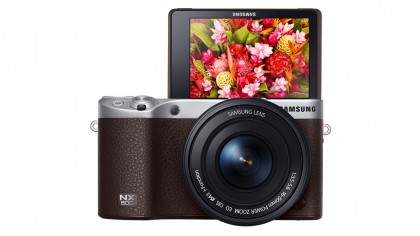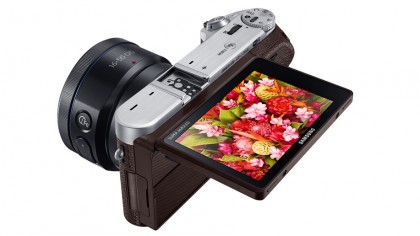Why you can trust TechRadar
At less than half the price, the NX500 offers a considerable saving upon the NX1. That price reduction comes at the cost of the viewfinder, a change in form factor and the loss of the weatherproofing, but you still get the same impressive sensor and a slightly modified processing engine. It also means that you can produce large, superb quality images and have access to some innovative features as well as fairly sensibly arranged user interface.
We like
With the exception of a viewfinder, the NX500 offers a pretty enticing collection of features. There are options and modes that will be attractive to both enthusiast and novice photographers and the autofocus system is very good, especially if you use one of Samsung's faster optics.


When the 16-50mm f/3-5-5.6 kit lens is mounted the NX500 feels very comfortable and secure in your hand, it's also nicely balanced. The controls are generally sensibly arranged, but there is scope to customise their use to make things a little better. Samsung's iFn control is especially useful for making quick settings adjustments on a relatively small camera that is likely to be held above or below head height, putting the buttons and dials on the top and back of the camera out of sight.
While not perfect, the camera's interface is generally very clear and easy to use.
The AMOLED screen on the back of the camera is also excellent and, although it suffers from reflections that limit the viewing angle in direct sunlight, it provides a pretty good view in situations that other screens struggle with.
Samsung has some great ideas about how to make photography easy in some situations, and while they seem a bit gimmicky, they are a step in the right direction for many novices. It would be nice, however, if the Trap mode (and others which may come) could be made more flexible to make them more useful to experienced photographers.
We dislike
My biggest issue with the NX500 is its lack of a viewfinder. Several other similarly priced (or cheaper) cameras aimed at the same market, such as the Olympus OM-D E-M10, Sony Alpha 6000 and Panasonic GX7, all have viewfinders. The new Canon EOS M3, however, is another notable viewfinderless camera.
As well as providing a clear view of the scene in bright light, a viewfinder makes it easier to concentrate on the image that you're composing and ignore any surrounding distractions. It's also easier to hold a camera steady and follow a moving subject when a camera is held to your eye. Without a viewfinder it's hard to get the full benefit of the NX500's excellent autofocus system.
I've said on several occasions that Samsung needs to sort out an issue with its manual focus assist feature and it's still something that still needs to be resolved with the NX500. Like many compact system cameras, when the NX500 is set to manual focus and manual focus assist mode is activated, the on-screen image is magnified to make it easier to see important details. Unlike other CSCs, however, it's not possible to move the location of the magnified area and it stays locked in the centre of the frame. Naturally, you can use the 'focus and recompose' technique, but this is less than ideal when accurate focus is absolutely critical – for example with macro subjects.
Verdict
In many respects the NX500 is an excellent camera. It is capable of resolving a lot of detail, keeps noise under control well for most of the native sensitivity range and it has a good range of features including a very competent autofocus system. It's also easy to use and has an excellent touch-screen as well as Samsung's iFn control. The only disappointment is the lack of a viewfinder.
